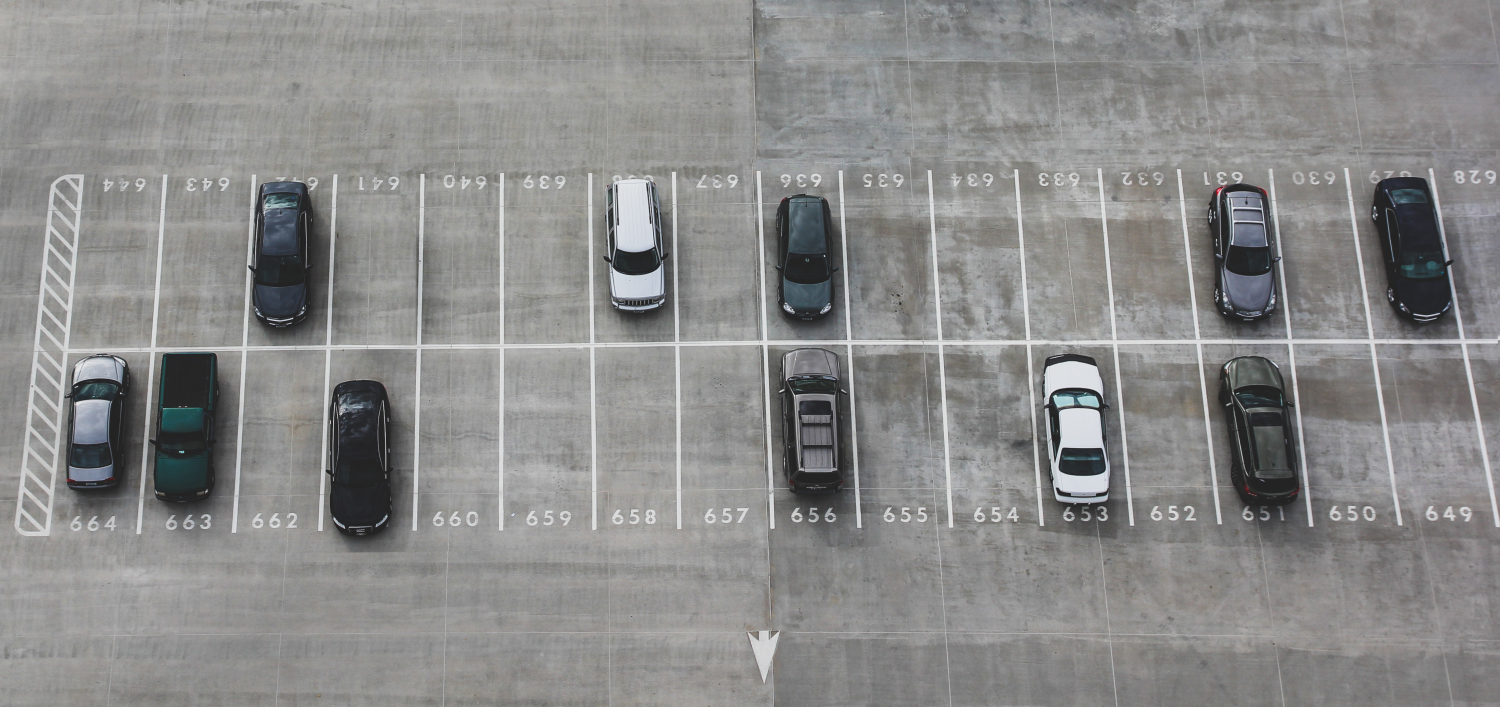
Nearly 30 percent of off-street parking spaces at multifamily developments in cities and towns around Boston are sitting empty at peak demand time, according to research released today by MAPC.
MAPC staff counted nearly 20,000 parking spots at almost 200 multifamily buildings in Arlington, Boston, Cambridge, Chelsea, Everett, Malden, Medford, Melrose, Newton, Quincy, Revere, Somerville, Waltham, and Watertown. They conducted counts in the dead of night on weeknights, when the number of parked cars is expected to peak because most people are home and asleep.
Out of 19,439 surveyed spots, 5,910 sat vacant. That’s equal to more than 41 acres of pavement and $94.5 million in construction costs.
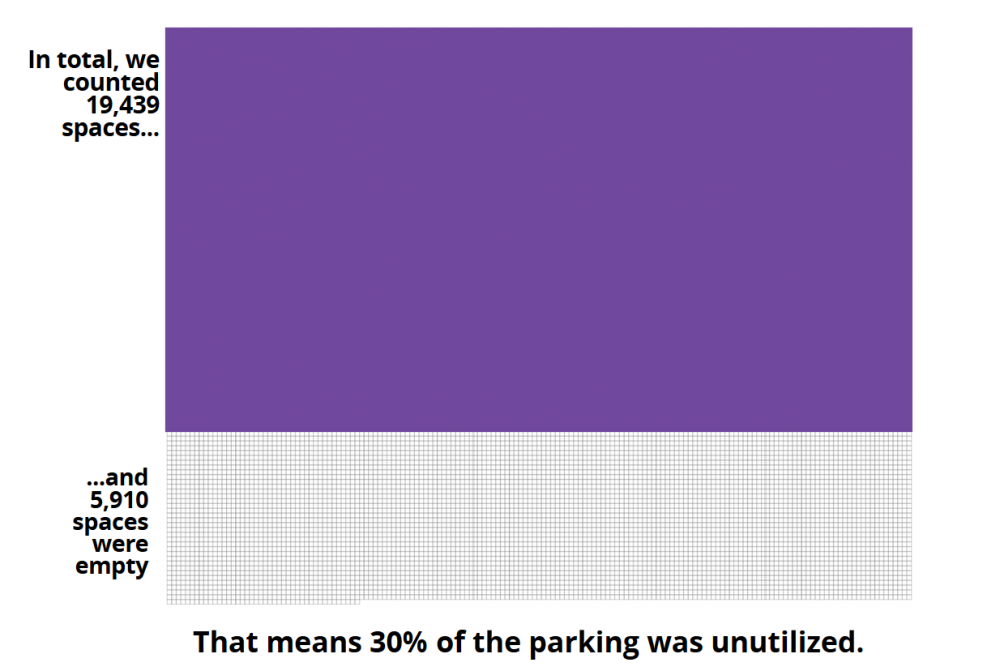
Most municipalities set minimum parking requirements for multifamily development. The purpose is often to minimize competition for on-street parking, but these requirements are often uniform across the entire municipality and don't take into account how parking needs might change based on proximity to transit, development type, or cost. The Perfect Fit Parking report shows that most multifamily developments in these communities have more parking than is needed or utilized.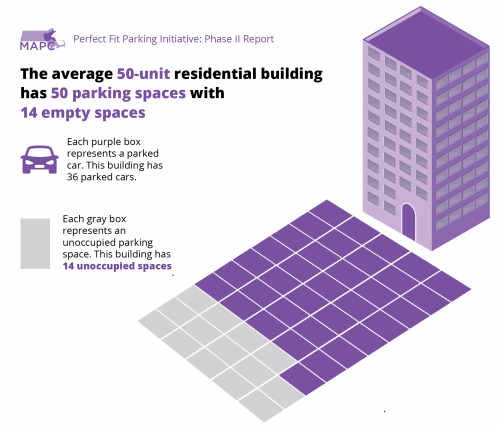
The Perfect Fit Parking Initiative aims to provide cities and towns with the data needed to make informed decisions when setting parking requirements. Overbuilt parking can contribute to higher construction costs, higher rents, fewer housing units, and less space for parks and greenery. A more “perfect fit” could prevent valuable land from sitting vacant.
In addition to information on parking, MAPC investigated 25 neighborhood and building characteristics to see if they correlated with parking demand. The three factors that most strongly influence parking demand? Transit accessibility, percentage of deed-restricted affordable units, and the amount of parking supplied.
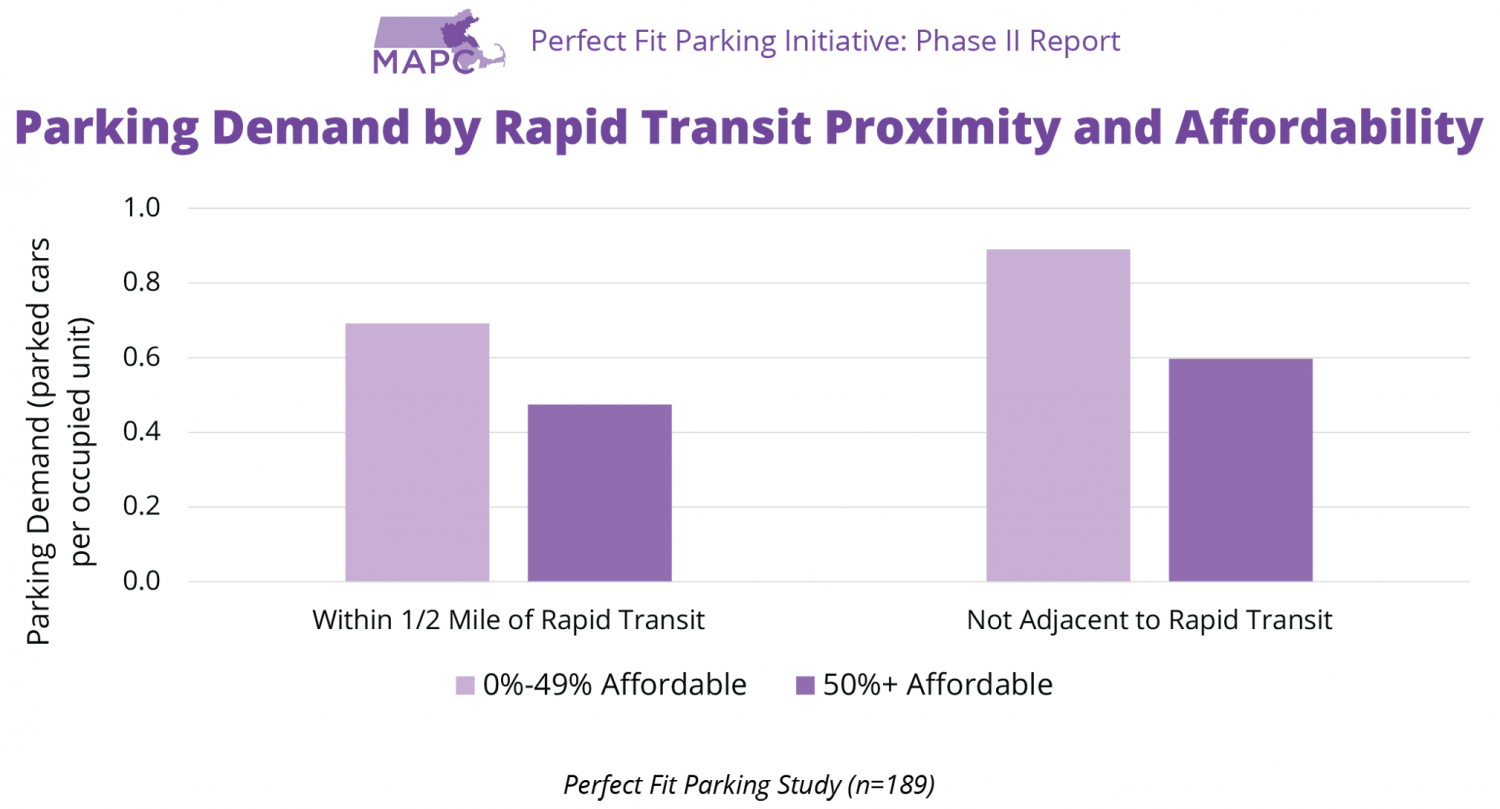
Parking supply is the single biggest indicator of parking demand. Providing more parking didn't mean that more parking spots were empty: in fact, the average utilization rate remained around 70 percent no matter what the supply was. This suggests that more parking availability might incentivize residents to keep or buy cars.
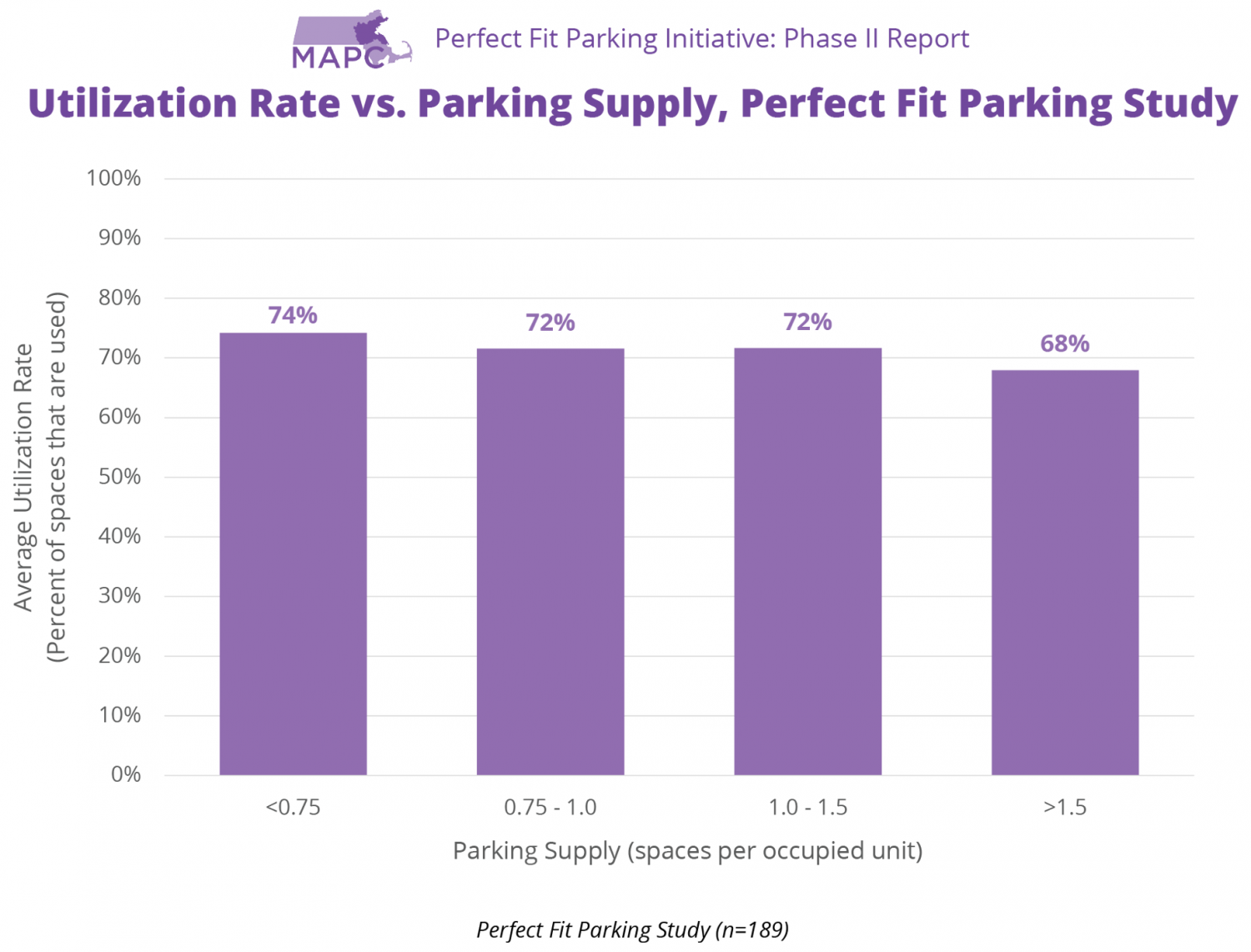
So what can communities do about these excess parking spaces? Already constructed spaces that are sitting unused could help meet neighborhood parking needs. To prevent overbuilding parking in the future, the report recommends:
- Require fewer spaces – or none at all: Eliminate or lower minimum parking requirements in local zoning codes, or tailor requirements to different types of development and different locations.
- Design transit-oriented developments for transit-oriented neighborhoods: New housing in areas with good transit connections should provide less spaces to encourage households with fewer vehicles.
- Don’t make people pay for what they don’t need: Uncouple rental costs for housing and parking so car-free households don’t pay for parking they don’t use. Allow unused parking spaces to be leased to neighbors, local employees, or commuters.
- Less parking, more affordable housing: Require more affordable units and lower parking requirements in return.
- Get ready for a parking marketplace: Be ready for a parking-rental app marketplace and set parameters before the market is fully established.
The Perfect Fit Parking report finds that if communities require excess parking at multifamily properties, residents with multiple vehicles will seek to live at those properties, or potentially even buy an additional car. Excess parking spaces encourage more driving (contributing to greenhouse gas emissions), serve as a barrier to walkable development, and disproportionately burden low-income populations. Aligning parking supply with demand (especially at transit-accessible sites or sites with a lot of affordable housing) could encourage more households to live in the neighborhood without owning a vehicle.

